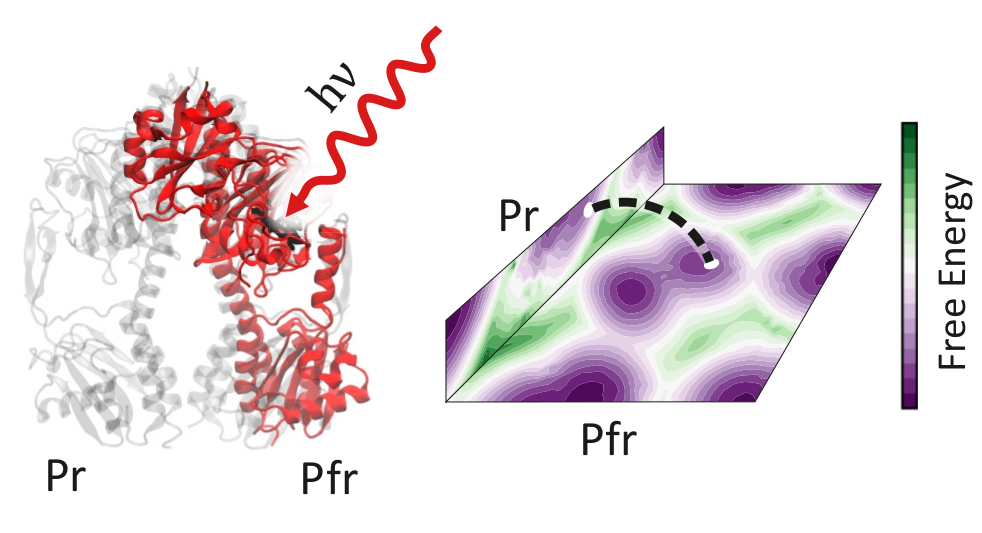Photoisomerization and Photo-switchable drugs
Azobenzene functionalized sulfonylureas
The concept of using light to control the action of drugs is not science-fiction anymore. Adding exogenous chromophores opens the possibility for precise light-control of protein switches. This idea is extensively exploited in optogenetics and optopharmacology. Using light allowed experimentalists to induce insulin from cells. The inward rectifying potassium channel KATP, which controls the insulin secretion in beta-cells, was opened and closed at will due to the photoisomerization of carefully designed molecules. The signal transduction goes from SUR1 to Kir6.2 complex due to a long-distance mechanical coupling between the chromophore and the pore. Using molecular dynamics simulations of SUR1 protein having the chromophore in the ground and excited singlet state conformations, we delineate differences in dynamics of these systems and provide a plausible explanation of artificially created photosensitivity in this complex system.

K. Walczewska-Szewc, W. Nowak, Photo-Switchable Sulfonylureas Binding to ATP-Sensitive Potassium Channel Reveal the Mechanism of Light-Controlled Insulin Release, J. Phys. Chem. B 125 (48), 13111-13121 DOI
Photo-switches in bacteria phytochrome
The ability of phytochromes to act as photoswitches in plants and microorganisms depends on interactions between a bilin-like chromophore and a protein. The interconversion occurs between the spectrally distinct red (Pr) and far-red (Pfr) conformers. The photoisomerization of the chromophore D-ring pyrrole triggers the conformational change. In our study, as a representative example of a phytochrome-bilin system, we take biliverdin IXα(BV) bound to bacteriophytochrome (BphP) from Deinococcus radiodurans. We mimic the effect of light by using an enhanced sampling molecular dynamics (MD) method to overcome the photoisomerization energy barrier. We find that the calculated free energy (FE) barriers between actual metastable states agree with spectroscopic results. We show that the enhanced dynamics of the BV chromophore in BphP contribute to triggering nanometer-scale conformational movements that propagate by two experimentally determined signal transduction pathways. What is more, we describe how the metastable states enable a thermal transition known as the dark reversion between Pfr and Pr, through a previously unknown intermediate state of Pfr. We present the heterogeneity of temperature-dependent Pfr states at the atomistic level. This work paves a way toward understanding the complete mechanism of the photoisomerization of a bilin-like chromophore in phytochromes.

J. Rydzewski, K. Walczewska-Szewc, S. Czach, W. Nowak, K. Kuczera, Enhancing the Inhomogeneonus Photodynamics of Canonical Bacteriophytochrome, The Journal of Physical Chemistry B 126 (14), 2647-2657 DOI